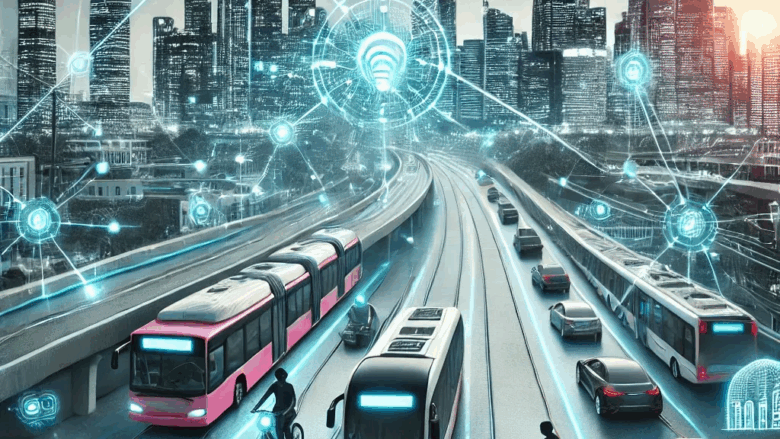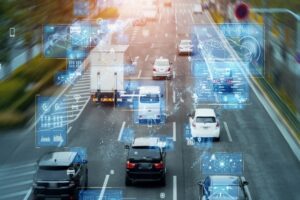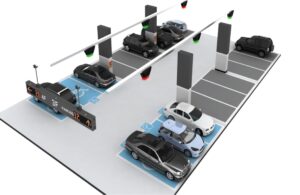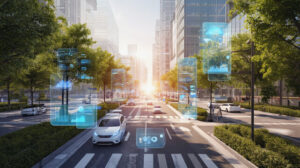As cities become increasingly intelligent, the way we travel is rapidly changing. Big data is at the heart of this transformation and is a key driver of smart mobility. Data analytics is transforming transportation, making it safer, more efficient, and more environmentally friendly. This effect is achieved by improving traffic flow and supporting autonomous vehicles. This change isn’t just about simplifying things; it’s fundamentally changing how cities function. To understand how we will travel, commute, and communicate in the future, you need to understand what big data is. This article explores how big data is driving the development of smart mobility technologies and changing the face of future cities.
Understanding the Relationship Between Big Data and Smart Mobility:
To understand how big data impacts smart mobility, you need to understand what big data is. Big data refers to the vast amounts of data collected by devices such as GPS systems, traffic sensors, mobile phones, public transportation systems, and connected cars. This information is unique due to its volume, velocity, and diversity. These data streams provide a comprehensive, real-time picture of how people move within cities. By analyzing this data, urban planners, transportation companies, and IT organizations can identify patterns, predict future trends, and make informed decisions to improve the entire transportation network.
How Big Data Enables Smart Mobility:
The practical application of big data in smart mobility is already transforming our daily commutes. One of the most important applications is real-time traffic management. Systems can use real-time data from sensors and GPS to predict traffic congestion and dynamically adjust traffic lights to alleviate it. They can also direct vehicles to less congested areas. The data significantly benefits public transportation by enhancing bus and train schedules based on passenger numbers. This reduces wait times and improves service reliability. Furthermore, ride-sharing services like Uber and Lyft use big data to effectively match drivers and passengers, predict peak periods, and set dynamic pricing. The result makes transportation more flexible and responsive.
The Benefits of Big Data in Smart Mobility:
The integration of big data into transportation systems offers significant benefits for cities and their residents. The most immediate benefit is smoother traffic flow. Improved traffic flow and public transport schedules result in shorter travel times and lower fuel consumption, resulting in lower CO₂ emissions and a greener city. Another important improvement is safety. By analyzing traffic intersections and driver behavior data, governments can implement targeted safety measures, such as reconstructing problem intersections or conducting awareness campaigns. Finally, big data can provide commuters with more accurate travel information and enable them to choose from a wider range of transportation options, making travel more personalized and convenient.
Issues Worth Considering and Problems to Address:
While big data offers enormous potential for smart mobility, several challenges remain. One of the most significant is data privacy. The collection of large amounts of data about people’s locations and travel patterns raises serious concerns about user consent, security, and the potential for data misuse. Maintaining public trust by ensuring this data is anonymized and protected is crucial. Data integration poses another challenge. Because information often comes from systems that don’t communicate with each other, it’s difficult to gain a complete understanding of the entire transportation network. Overcoming these technical and ethical challenges requires strict regulations and collaboration between the public and private sectors.
The Future of Big Data and Smart Mobility:
Emerging technologies will further connect future smart mobility with big data. The rise of self-driving cars will depend on the continuous processing of vast amounts of information from sensors to ensure their safe and efficient operation. The Internet of Things (IoT) will enable the collection of even more data by connecting devices. This will provide us with more detailed information about how people move around cities. Predictive analytics will become more advanced, allowing cities not only to react to traffic conditions but also to anticipate and prevent congestion before it occurs. Such technology will enable fully integrated, multimodal transportation systems, where a single platform can plan and schedule smooth journeys across multiple services.
Making Cities Smarter:
The application of big data is no longer a distant prospect; it’s happening now, making cities smarter and more livable. We can use data to build safer, more efficient transportation systems that better serve all citizens. While privacy and infrastructure issues remain, there’s no denying that smart transportation is on the rise. With the emergence of new ideas in this area, we can look forward to a future where our daily journeys are smoother, more environmentally friendly, and part of truly smart cities. This journey requires collaboration, planning, and a commitment to using technology for the benefit of everyone.
FAQs:
1. What does “smart mobility” mean?
Smart mobility refers to the use of technology and data to make transportation systems more connected, efficient, and sustainable. It encompasses everything from real-time traffic management and improving the efficiency of public transportation to shared mobility services and self-driving cars, all designed to make it easier for people to navigate cities.
2. How can big data improve public transportation?
Big data helps public transportation companies develop optimal routes and schedules based on the number of passengers at any given time. This can reduce wait times and congestion. It can also perform predictive maintenance on vehicles, reducing breakdowns and service interruptions and making the system more reliable and user-friendly.
3. Does smart mobility pose privacy risks?
Yes, collecting data about your location and travel patterns poses significant privacy risks. To mitigate these risks, robust data protection measures must be implemented, such as anonymizing and securely storing the data. This not only ensures the security of personal data but also enables useful analyses.
4. What role does artificial intelligence play in big data for smart mobility?
Artificial intelligence (AI) and machine learning are necessary to understand the vast amounts of data generated by smart mobility systems. AI systems can detect complex patterns, predict future traffic volumes and demand, and help people make real-time decisions. This is crucial for applications such as real-time traffic light control and autonomous driving.
5. What can cities do to prepare for the future of smart mobility?
Cities can prepare by investing in digital infrastructure such as data platforms and high-speed networks. Cities should also encourage public-private partnerships, promote new ideas, and establish clear regulations to address important issues like data privacy and security. To ensure a smooth transition, it is crucial to engage with communities and understand their needs.




